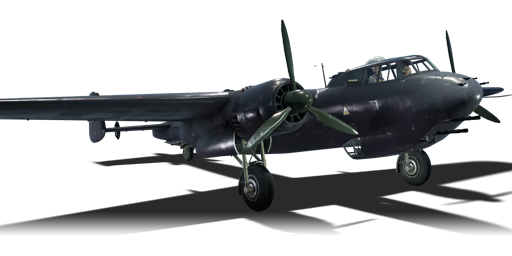

Aviation
Do 217 J-1
I
Rank
AB
2.0
RB
2.0
SB
2.7
Battle rating
Germany
Research country
Fighter
Main role
4,000

Research
2,100

Purchase
General information
Flight performance
Max speed
at 5,500 m
469433488452 km/h
Rate of Climb
5.9484.1 m/s
Turn time
3336.131.734.4 s
Max altitude
8,000 m
Takeoff Run
750 m
Landing
flaps
flaps
Take-off
flaps
flaps
Combat
flaps
flaps
Air
brake
brake
General characteristics
Crew
4 persons
Engine
Length
18.2 m
Wingspan
19 m
Wing Loading
228 kg/m²
Weight:
Base weight
10.8511.1810.5811.13 t
Fuel in main tanks
2.07 t (1h 50m)
Limits:
Max Speed Limit (IAS)
700 km/h
Mach Number Limit
0.65 M
G limit
≈ -5/7 G
Flap Speed Limit (IAS)
L / T
270 / 382 km/h
Gear Speed Limit (IAS)
350 km/h
Offensive armament
4 × 20 mm MG FF/M cannon
Ammunition
800 rounds
Fire rate
520 shots/min
One-second Burst Mass
0.94 kg
| Belt | Belt filling | Armor penetration (mm) at a distance: | |||||
|---|---|---|---|---|---|---|---|
| 10 m | 100 m | 500 m | 1000 m | 1500 m | 2000 m | ||
| IT/HEI/APHE | 19 | 18 | 15 | 10 | 4 | 4 | |
| IT/HEI/HEI/APHE | 19 | 18 | 15 | 10 | 4 | 4 | |
| FI-T/HEI/HEI/FI-T/HEI/HEI/APHE | 19 | 18 | 15 | 10 | 4 | 4 | |
| IT | 10 | 10 | 5 | 2 | 1 | 1 | |
| APHE/HEI/HEI/HEI/AP-I | 20 | 17 | 10 | 5 | 3 | 2 | |
4 × 7.92 mm MG 17 machine gun
Ammunition
2,800 rounds
Fire rate
1,200 shots/min
One-second Burst Mass
0.21 kg
| Belt | Belt filling | Armor penetration (mm) at a distance: | |||||
|---|---|---|---|---|---|---|---|
| 10 m | 100 m | 500 m | 1000 m | 1500 m | 2000 m | ||
| AP-T/AP-I/AI | 9 | 8 | 6 | 3 | 0 | 0 | |
| AP-T/AP/AI/AP-I | 13 | 12 | 7 | 3 | 2 | 0 | |
| AP-T | 9 | 8 | 6 | 3 | 0 | 0 | |
| AI/AP/AP/AP/AI | 13 | 12 | 7 | 3 | 2 | 0 | |
Defensive armament
2 × Turret — 13 mm MG 131 machine gun
Ammunition
1,000 rounds
Fire rate
900 shots/min
One-second Burst Mass
0.54 kg
| Belt | Belt filling | Armor penetration (mm) at a distance: | |||||
|---|---|---|---|---|---|---|---|
| 10 m | 100 m | 500 m | 1000 m | 1500 m | 2000 m | ||
| IT/AP-I/IAI/AP-I | 19 | 16 | 8 | 4 | 2 | 1 | |
| AP-T/AP-T/AP-T/IAI | 19 | 16 | 8 | 4 | 2 | 1 | |
Suspended armament
Setup 1
8 × 50 kg SC50JA bomb
Economy
Repair cost
Basic → Reference
AB
165 → 212 

RB
352 → 452 

SB
516 → 663 

Crew training
600 

Experts
2,100 

Aces
45 

Research Aces
110,000 

Reward multiplier
AB / RB / SB
10 / 30 / 60 % 

100 % 

Total cost of modifications
4,450 

2,680 

Talisman cost
300 

Research order:
Flight performance | |
|---|---|
Survivability |
|---|
Weaponry | |
|---|---|
Rating by players
You must play more than 3 battles for the last week and more than 10 battles in a vehicle to rate it.
Like:
14
Flight performance:
Not enough ratings
Survivability:
Not enough ratings
Aerial combat:
Not enough ratings
Ground attack:
Not enough ratings
Balance:
Not enough ratings
Tips & Tricks
This space is currently empty
Do you know any interesting vehicle features?
Loading...
No articles about this vehicle yet
Become the first author and get rewards!
Write a guide, tell about interesting historical facts, make a tutorial or simply an interesting post.
No more content